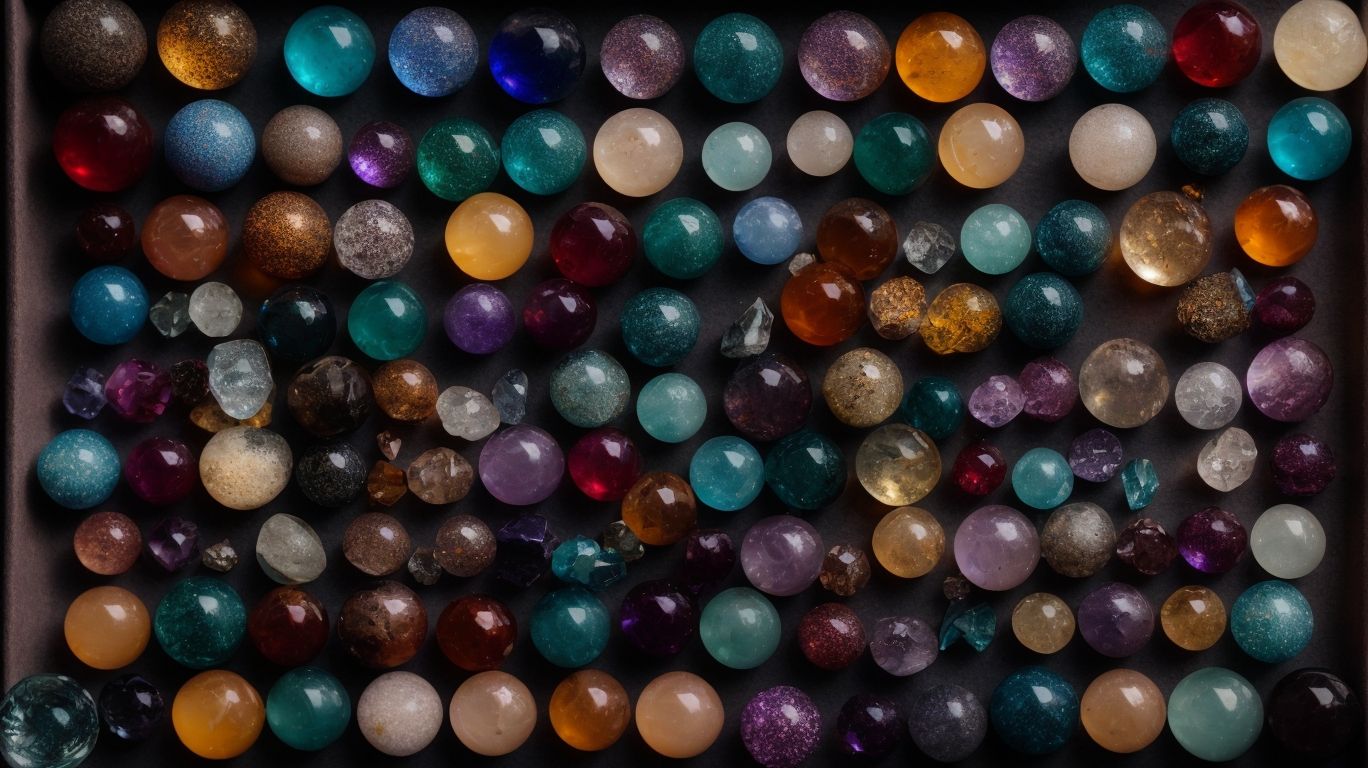
Earth’s Fiery Art: Uncovering the Secrets of Red Rock with Crystals
Unveiling the earth’s fiery art, this article delves into the captivating world of red rocks and their mesmerizing allure. From exploring the origins of their distinctive color to understanding the role of minerals and crystals in their formation, this comprehensive guide will unravel the enigmatic nature of red rocks.
Delving into their properties, including their healing and metaphysical attributes, as well as their diverse applications in daily life, this article aims to provide a deeper understanding of these remarkable geological formations. Join us on this captivating journey as we uncover the secrets of red rocks and their fascinating connection to crystals.
What are Red Rocks?
Red Rocks are natural formations characterized by their fiery hue and captivating artistry, often uncovering geological secrets dating back millions of years.
The vibrant red coloration of these rocks is a striking visual representation of the iron oxide minerals within their composition, testament to the natural forces shaping the Earth over millennia. Their unique geological formations, shaped by the erosion and sedimentation processes, make them a valuable resource for understanding the Earth’s history. Artists and geologists alike are drawn to Red Rocks for their stunning beauty and rich geological significance, providing a wealth of inspiration and knowledge for those who explore their depths.
What Gives Red Rocks their Color?
The vibrant red color of Red Rocks is attributed to the presence of specific minerals and geological processes embedded within the earth’s crust, culminating in their mesmerizing fiery appearance.
What Minerals are Found in Red Rocks?
Red Rocks are abundant in a diverse array of minerals such as crystals, formed through intricate geological processes, reflecting the captivating artistry of nature’s mineralogical composition.
These minerals are the result of thousands of years of geological transformations, where unique crystal structures have developed due to the interplay of pressure, temperature, and chemical reactions within the Earth’s crust. The mineral composition includes a wide range of elements, each contributing to the vibrant hues and mesmerizing patterns that make Red Rocks a geological marvel.
Geological discoveries have unveiled the complex processes that have shaped the formation of these minerals, providing valuable insights into the realm of crystallography and mineralogy.
Where are Red Rocks Found?
Red Rocks can be found in various regions across the globe, showcasing their fiery allure and artistic appeal in diverse landscapes, from deserts to mountainous terrains.
What Are the Famous Red Rock Formations in the World?
Some of the most renowned Red Rock formations in the world include iconic sites like [Famous Site 1], [Famous Site 2], and [Famous Site 3], each revealing the geological majesty and captivating artistry of these natural wonders.
Their striking red hues, sculpted shapes, and sprawling landscapes have attracted artists, geologists, and history enthusiasts alike. These formations offer a glimpse into the Earth’s ancient past, showcasing the transformative power of geological processes over millions of years. From the towering spires of [Famous Site 1] to the sweeping canyons of [Famous Site 2], these landmarks serve as living canvases that depict the enduring forces of nature. They are not only geological marvels but also cultural and historical treasures, bearing witness to the passage of time and human civilization.
How are Red Rocks Formed?
The formation of Red Rocks is intricately linked to geological phenomena, involving the crystallization of molten rock and the subsequent cooling and solidification processes, ultimately shaping these captivating geological features.
What is the Role of Crystals in the Formation of Red Rocks?
Crystals play a pivotal role in the formation of Red Rocks, as their crystallographic study reveals insights into the mineral properties, geological history, and the intricate processes that shape these captivating geological formations.
These crystals are essential in mineral identification and understanding the geological events that have transpired over millions of years. Scientists apply crystallographic techniques to analyze the internal structures of these minerals, providing valuable clues about the formation and transformation processes.
The unique properties and alignment of crystals influence the strength and durability of Red Rocks, contributing to their striking appearance and resilience against erosion. The interplay of various minerals within these crystals contributes to the distinct colors and patterns observed in the Red Rocks formations, adding to their enchanting allure.
What are the Properties of Red Rocks?
Red Rocks exhibit a range of unique properties stemming from their geological composition and crystallographic analysis, encompassing mineralogy, crystal growth patterns, and the rock cycle, providing valuable insights into the geological intricacies of these natural wonders.
What are the Healing Properties of Red Rocks?
Red Rocks are believed to possess healing properties, backed by crystallographic analysis and the exploration of crystallography techniques, offering insights into their potential metaphysical and therapeutic benefits.
These healing properties have been the subject of geological investigations, revealing the unique mineral formations and their potential effects on the human body. Crystallography studies have shown how the molecular structure of these rocks interacts with energy fields, leading to claims of physical and spiritual healing. The metaphysical aspects of these properties delve into ancient beliefs and alternative medicine, creating an intriguing discussion that combines scientific analysis with holistic perspectives.
What are the Metaphysical Properties of Red Rocks?
Red Rocks are associated with a range of metaphysical properties, with their crystallographic analysis and the usage of crystallography techniques shedding light on their potential spiritual and holistic significance.
This geological formation has long been revered for its energetic resonance and believed to amplify spiritual energies. Crystallography methods have unveiled the intricate structures within these rocks, providing insight into their unique vibrational frequencies. The study of crystallography has allowed researchers to understand the correlation between the mineral composition of Red Rocks and their purported healing properties, further delving into the intersection of geology and spirituality.
These findings continue to pique the interest of both geologists and practitioners of holistic healing modalities.
How Can You Use Red Rocks in Your Daily Life?
Incorporating Red Rocks into your daily life can enrich your surroundings with their fiery allure and artistic charm, whether through home decor, jewelry, or meditation practices, reflecting the multifaceted appeal of these mesmerizing geological treasures.
How Can You Incorporate Red Rocks in Your Home Decor?
Red Rocks can be artfully integrated into home decor, adding a touch of natural allure and earthy elegance to interior spaces, whether through ornamental displays, accent pieces, or incorporation into functional items.
Their rugged beauty and mesmerizing hues make them perfect for creating a unique and serene atmosphere. You can use them as bookends, terrarium decorations, or even as the base for a stunning crystal centerpiece. Incorporating crystals like amethyst or quartz along with Red Rocks can amplify their artistic appeal, and add a touch of mystique and cultural significance to your decor.
The juxtaposition of these natural formations with sleek, modern designs can create a captivating contrast that infuses your living space with warmth and character.
What Are Some Popular Ways to Use Red Rocks in Jewelry?
Red Rocks are frequently utilized in jewelry-making, with their crystallographic analysis and the application of crystallography techniques enhancing their aesthetic value and cultural resonance, creating stunning and meaningful adornments.
This has led to an increased interest in geological investigations of these rocks, as their unique mineral composition and physical properties add depth and character to the jewelry pieces. The use of Red Rocks in jewelry dates back centuries, with different cultures attributing various symbolic meanings to these stones, from love and passion to strength and protection. This cultural significance adds an extra layer of allure to the jewelry, making it much more than just a beautiful accessory.
How Can You Use Red Rocks in Meditation and Healing Practices?
Red Rocks hold potential for utilization in meditation and healing practices, with their crystallographic analysis and the exploration of crystallography techniques offering insights into their spiritual and therapeutic applications, fostering a deeper connection with nature and inner harmony.
The unique metaphysical properties of Red Rocks, attributed to their mineral composition and geological formations, create an environment conducive to balance and spiritual rejuvenation. As individuals incorporate Red Rocks into their meditation and healing rituals, they tap into the inherent energies of these natural formations, seeking alignment with their own internal frequencies. This alignment facilitates a sense of tranquility and emotional grounding, enhancing the holistic well-being experience.
By exploring crystallography methods, researchers uncover the intricate structures and energies embedded within Red Rocks, contributing to the understanding of their potential therapeutic benefits.




No Comments